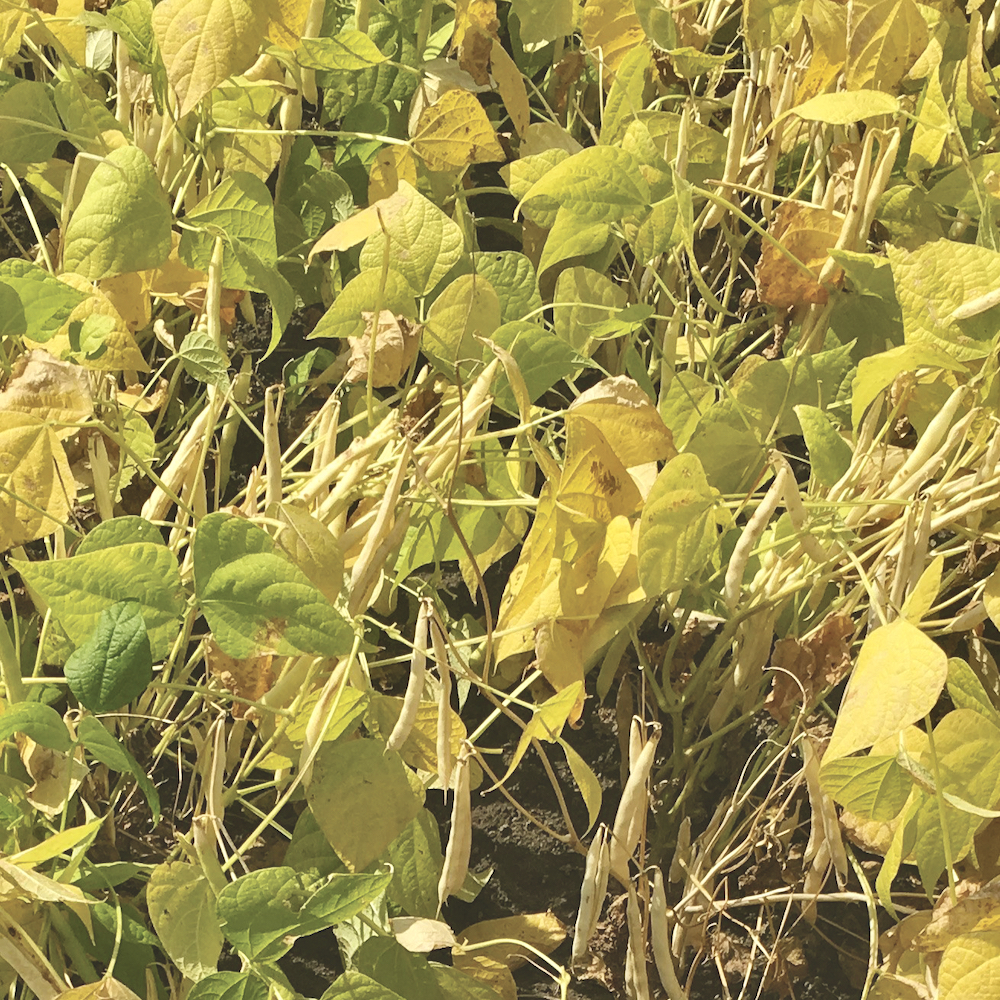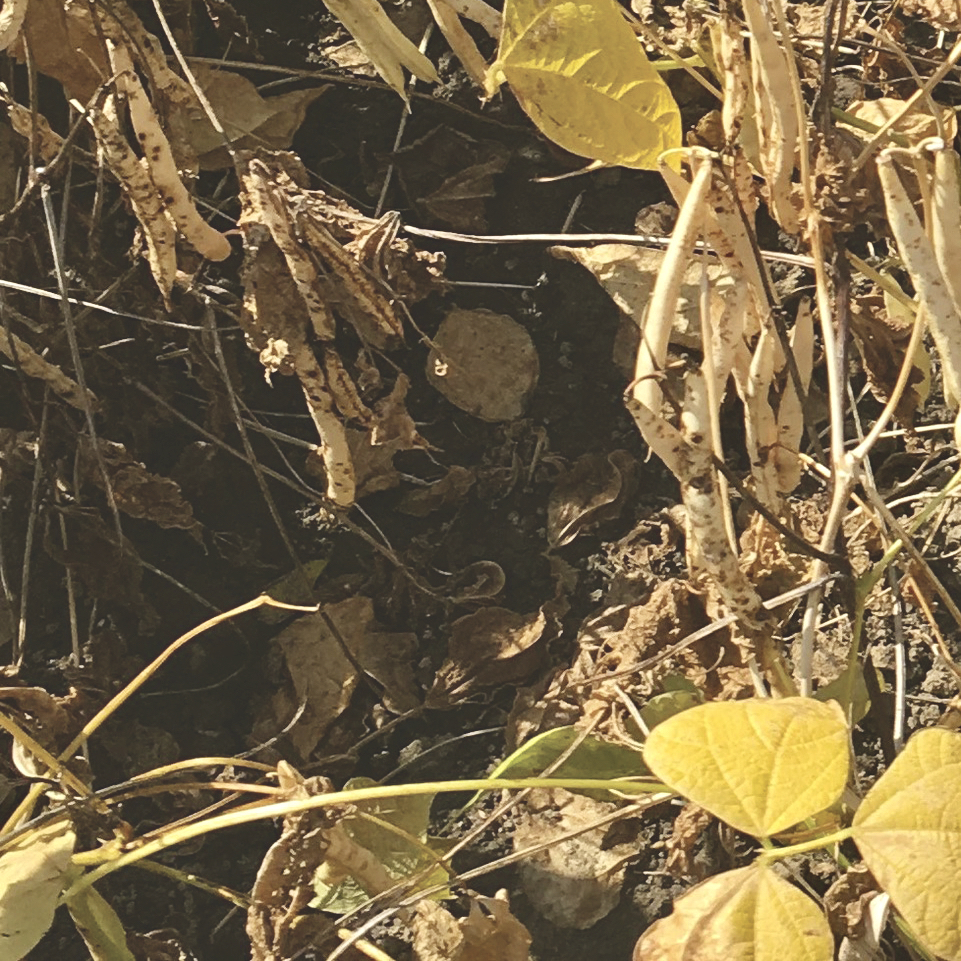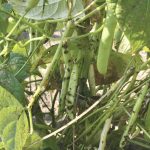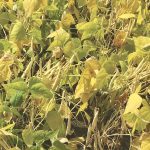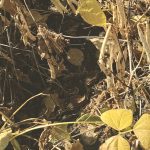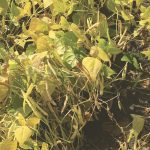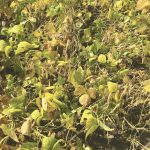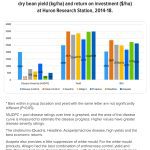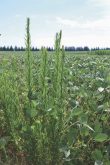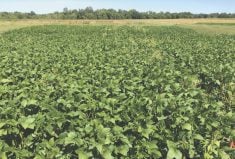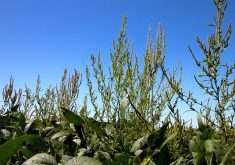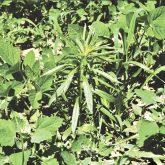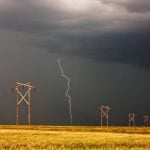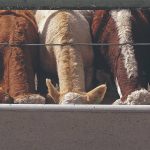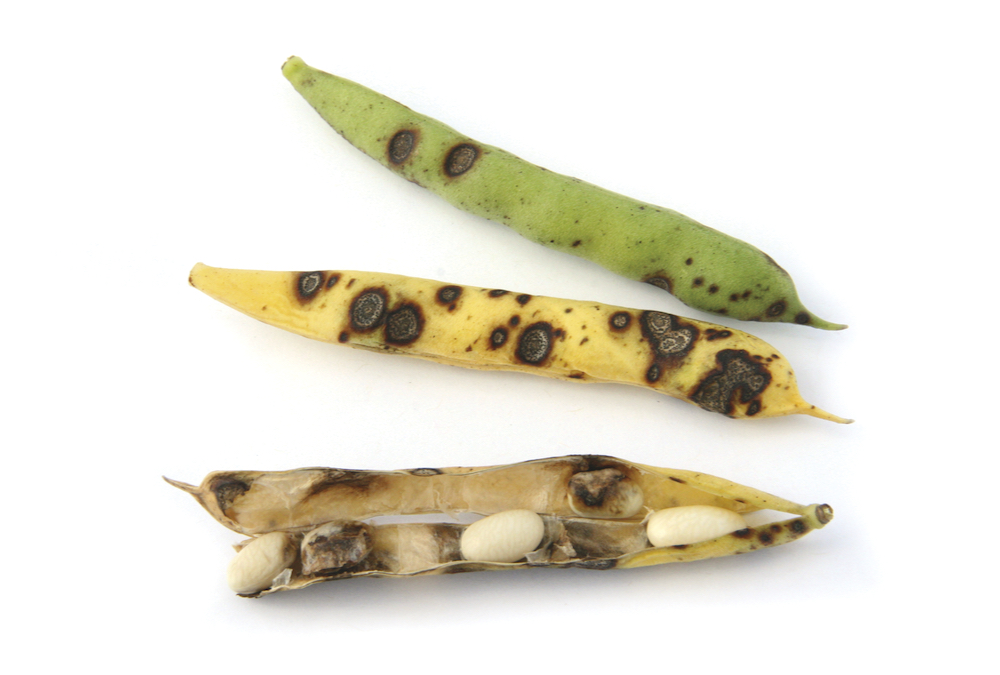
_Crop_Patrol_2022_Dec_-Anthracnose_fungicides_for_dry_beans_-IMG_3838_Ali
Anthracnose lesions leave pods and beans pitted causing lower yields.
Photo: Alireza Navabi, University of Guelph
severe anthracnose infections-uofg
Severe infections of anthracnose can cause yield losses and quality issues in the crop.
Photo: Alireza Navabi, University of Guelph
_Crop_Patrol_2022_Dec_-Anthracnose_fungicides_for_dry_beans_-Allegro_High_zoom
The best combination of control of anthracnose, yield and return on investment came from Allegro.
Photo: Chris Gillard, University of Guelph
_Crop_Patrol_2022_Dec_-Anthracnose_fungicides_for_dry_beans_-Inoculated_Check
The untreated check shows the extent of the lesions that appear on leaves, stems and pods.
Photo: Chris Gillard, University of Guelph
anthracnose infections propulse-uofg
Plants with Propulse have fewer leaves attached, a measure of disease infection for anthracnose.
Photo: Chris Gillard, University of Guelph
_Crop_Patrol_2022_Dec_-Anthracnose_fungicides_for_dry_beans_-Quadris
Quadris was among the best products for controlling anthracnose and providing higher return on investment.
Photo: Chris Gillard, University of Guelph
anthracnose disease severity-HuronResearchStation
Anthracnose disease severity (AUDPC1), dry bean yield (kg/ha) and return on investment ($/ha) at Huron Research Station, 2014-18.
Photo: Supplied
Anthracnose can cause severe yield and seed quality issues in dry beans. Anthracnose is managed in part with genetic resistance, clean seed and chemical seed treatments. Locally grown seed increases the risk of a disease outbreak and growers are encouraged to use fungicides to manage this risk. The purpose of the study was to measure fungicide performance and economic returns, with a focus on fungicides registered to control white mould in dry bean. Can one fungicide manage white mould and anthracnose?
Four small-plot experiments were run at the Huron Research Station at Exeter, Ont., between 2014 and 2018. Infected seed and a foliar inoculum were used to provide the initial disease infection. Overhead irrigation was used to promote disease growth. Five fungicides were compared to an untreated control treatment. An index was developed to measure disease severity over time — as the index increased, disease increased. Seed yield (kg/ha) was adjusted to 18 per cent moisture and return on investment (ROI) ($/ha) accounted for the fungicide and application costs, with all other costs assumed to be the same.
– Chris Gillard is an associate professor of Dry Bean Agronomy & Pest Management at the University of Guelph, and Meghan Moran is a Canola and Edible Bean Specialist with Ontario Ministry of Agriculture, Food and Rural Affairs (OMAFRA).
Read Also

Producers aren’t panicking over tariffs and trade threats
The influence of tariff and trade uncertainity on farm business decisions.
Originally published in Crop Protection 2020. Volume 127. 104979.


